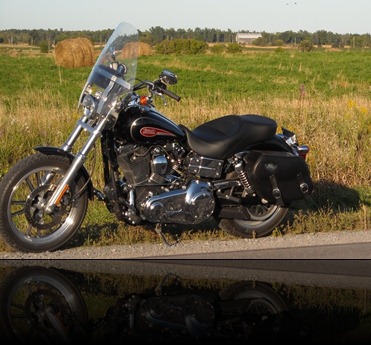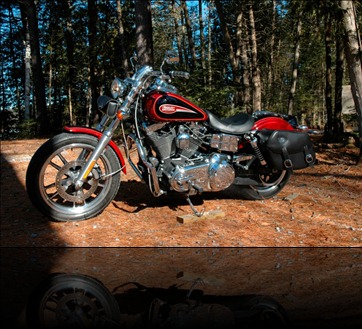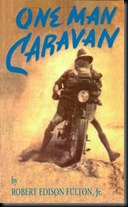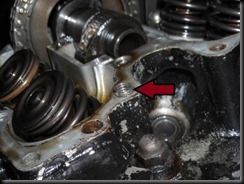Last year I mused (
here) about customising my ride and what I could do that was truly unique. In the H-D world, the derby cover is a common way for the owner to announce his/her interests or allegiances – like a mini-billboard on the side of your ride – so that seemed a reasonable customisation target.
As the objective was for something unique, that eliminated the ubiquitous “Live to Ride” messaging, the flames, the skulls, and the American flag (me being Canadian and all). But I did like the patriotic flavour associated with flying the flag so I decided to play around with that concept. Besides there were no manufacturers of derby covers (that I could find) who offered any variation of the Canadian flag, which would make my cover even more one-of-a-kind.
Not being much of an artist, it took me quite a while to come up with a layout that I liked. Dozens of different mock-ups were printed, cut out, and taped onto the cover to see how they looked. I considered coloured and monochrome, simple and complex, large and small images before finally deciding on a simple, monochromatic graphic.
I still wasn’t too sure how it would look in the end so, reluctant to invest too much in the project, I scoured eBay for a suitable used derby cover as my canvas. And I got lucky, finding a nearly new polished aluminum cover for little more than the cost of shipping – a far cry from buying new.
Now the only challenge that remained was finding a way to transfer the image to the cover. At first I considered having it cut in, but after visiting a few machine shops that option went away because of either technical or cost issues. I tried engraving shops but decided I didn’t like the effect where the image was basically cut in multiple passes resulting in a grooved pattern. Chemical etching was a possibility, but again very expensive unless you’re prepared to do it yourself, which I learned is not a simple process.
But then I found a small local shop that could do laser engraving. They couldn’t cut directly onto a curved surface either, but they were able to cut a template for me out of an adhesive-backed material that would withstand sand blasting yet still be easily removed.
One template, a bag of good quality blasting grit, and many test runs later I now have my one-of-a-kind cover. It was a fun project to do, I learned a lot about what is and isn’t possible, I met some good people, it was relatively inexpensive (in dollars if not in time), and I’m very pleased with the results. Now if only every project ended this way.


 ““Oh no,” I replied. “I’m going around the world on a motorcycle.””
““Oh no,” I replied. “I’m going around the world on a motorcycle.””  Of 11 bolts that hold the rocker cover in place, 9 had been stripped. Of those 7 had previously been heli-coiled, of which 5 of the heli-coils had also been stripped. So basically, if I had been able to do so, I could have turned the bike upside down and given it a good shake to have the rocker cover simply fall off. Now I knew why the previous owner (the so-called motorcycle mechanic!) had been reluctant to fix the oil leak – although, to his credit, he did advise me of it during the negotiations. So I guess it’s really my fault for not digging further into it at the time. (Another lesson learned, belatedly.)
Of 11 bolts that hold the rocker cover in place, 9 had been stripped. Of those 7 had previously been heli-coiled, of which 5 of the heli-coils had also been stripped. So basically, if I had been able to do so, I could have turned the bike upside down and given it a good shake to have the rocker cover simply fall off. Now I knew why the previous owner (the so-called motorcycle mechanic!) had been reluctant to fix the oil leak – although, to his credit, he did advise me of it during the negotiations. So I guess it’s really my fault for not digging further into it at the time. (Another lesson learned, belatedly.)